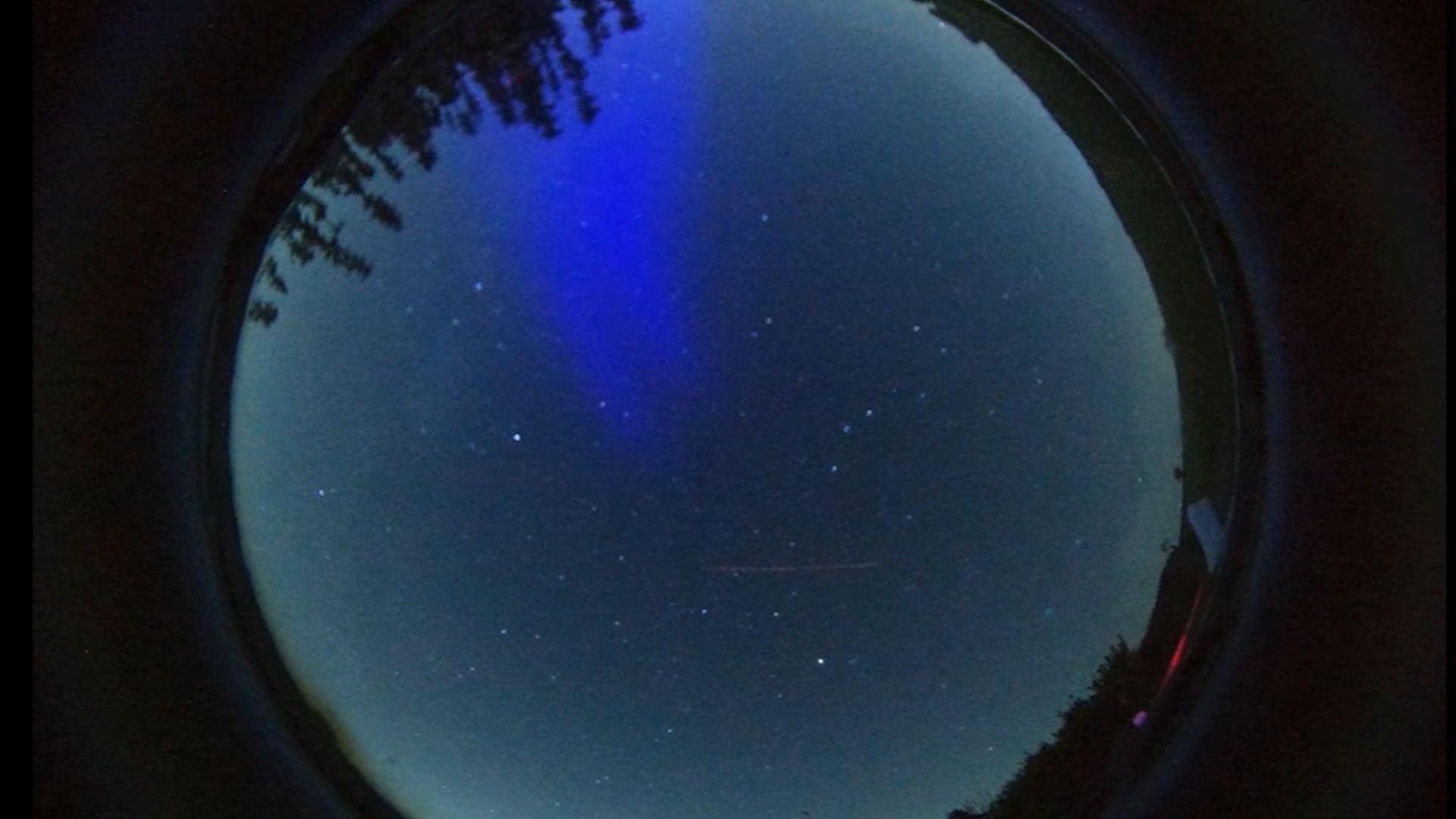The universe is a big place, and it's full of big things. Planets, stars, galaxies and clusters of galaxies extend upward on ever-more-massive scales. Here we marvel at some of the record holders in different cosmic categories, perhaps feeling humbled by the universe's ability to produce entities of incredible size and grandeur.
Largest exoplanet: GQ Lupi b
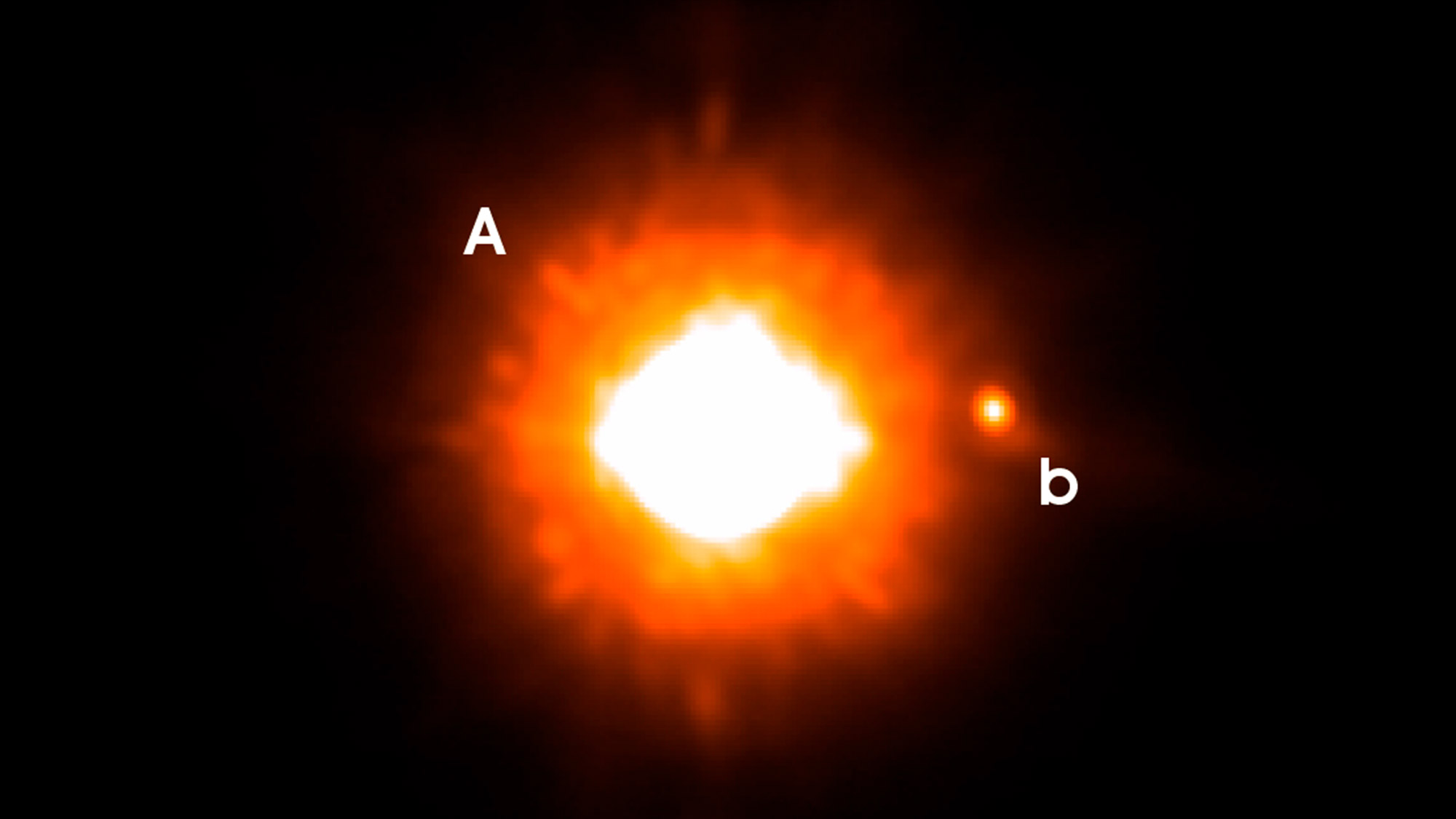
Astronomers weren't sure what to make of the mysterious GQ Lupi b when it was first discovered in 2005. Orbiting a young star around two and a half times farther than Pluto is from the sun, the companion object seemed to be either a planet or a brown dwarf, which is actually a type of small star. Subsequent observations have yet to clear up the confusion, but the best estimates suggest GQ Lupi b has a radius around 3.5 times that of Jupiter, meaning that if it is an exoplanet, it's the largest ever found.
Largest star: UY Scuti

UY Scuti is a hypergiant star with a radius that's around 1,700 times larger than the sun, making it the biggest known star in the universe. If someone were to place UY Scuti at the center of the solar system, its edge would extend just beyond the orbit of Jupiter. Gas and dust streaming from the star would extend even farther out, beyond the orbit of Pluto, or around 400 times the Earth-sun distance.
Largest Nebula: The Tarantula Nebula
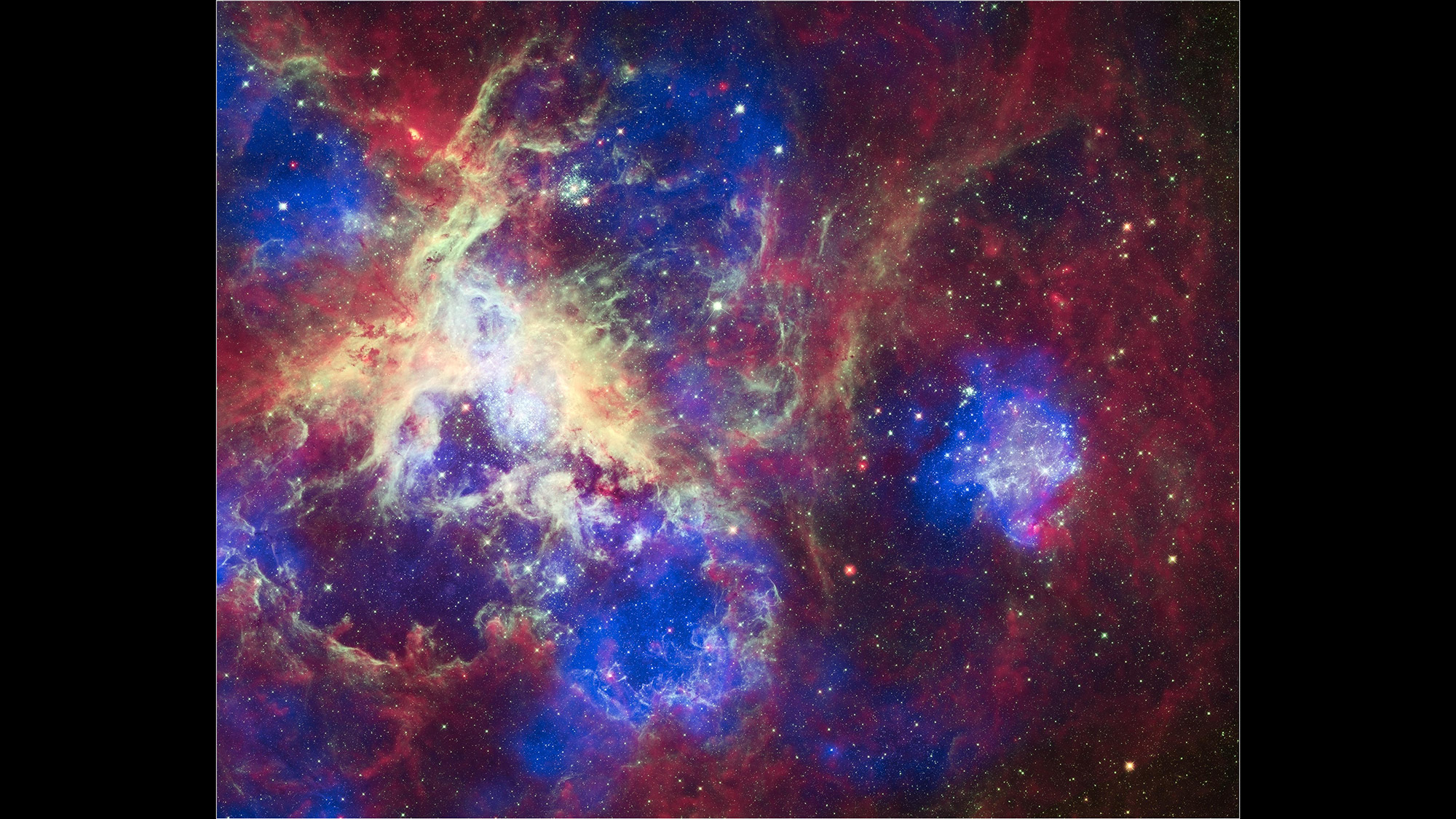
Both the largest known nebula and most active star-forming region in our local galactic neighborhood, the Tarantula Nebula stretches for more than 1,800 light-years at its longest span. Also known as 30 Doradus, the object is located 170,000 light-years from Earth in the Large Magellanic Cloud, a small satellite galaxy that orbits our Milky Way. Rather than a killer arachnid, this Tarantula is a stellar nursery — within its beautiful folds of gas and dust young stars are being born.
Largest empty spot: Supervoid in Eridanus
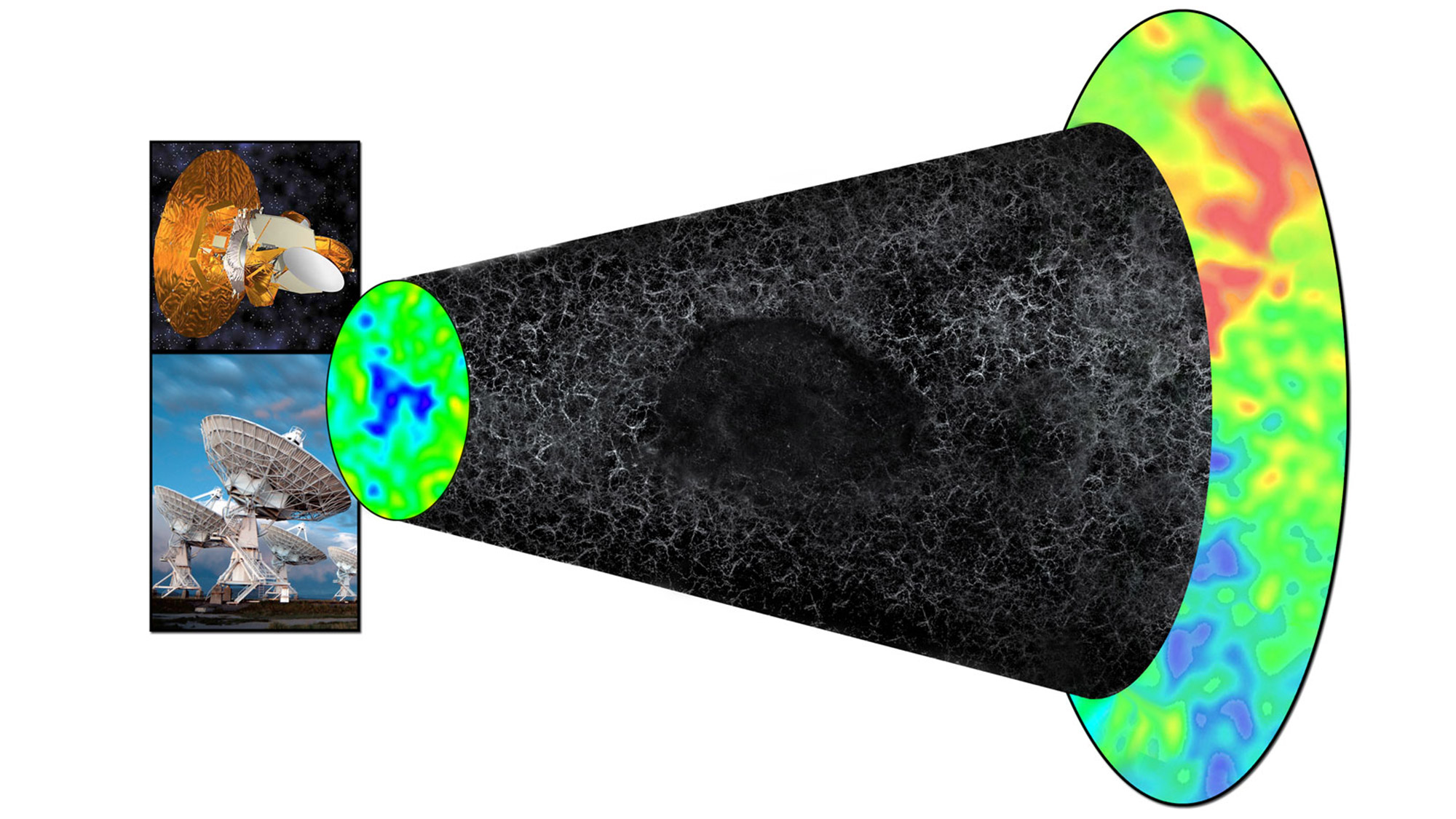
In 2004, astronomers noticed a gigantic region of empty space in maps created by NASA's Wilkinson Microwave Anisotropy Probe (WMAP) satellite, which scanned in exquisite detail the cosmic microwave background, or the leftover radiation from the Big Bang. The spot, which spans 1.8 billion light-years across, according to Vice, is strangely devoid of stars, gas, dust and even dark matter. While they have seen previous voids, researchers remain baffled as to how exactly one of this size and scale formed.
Largest galaxy: IC 1101
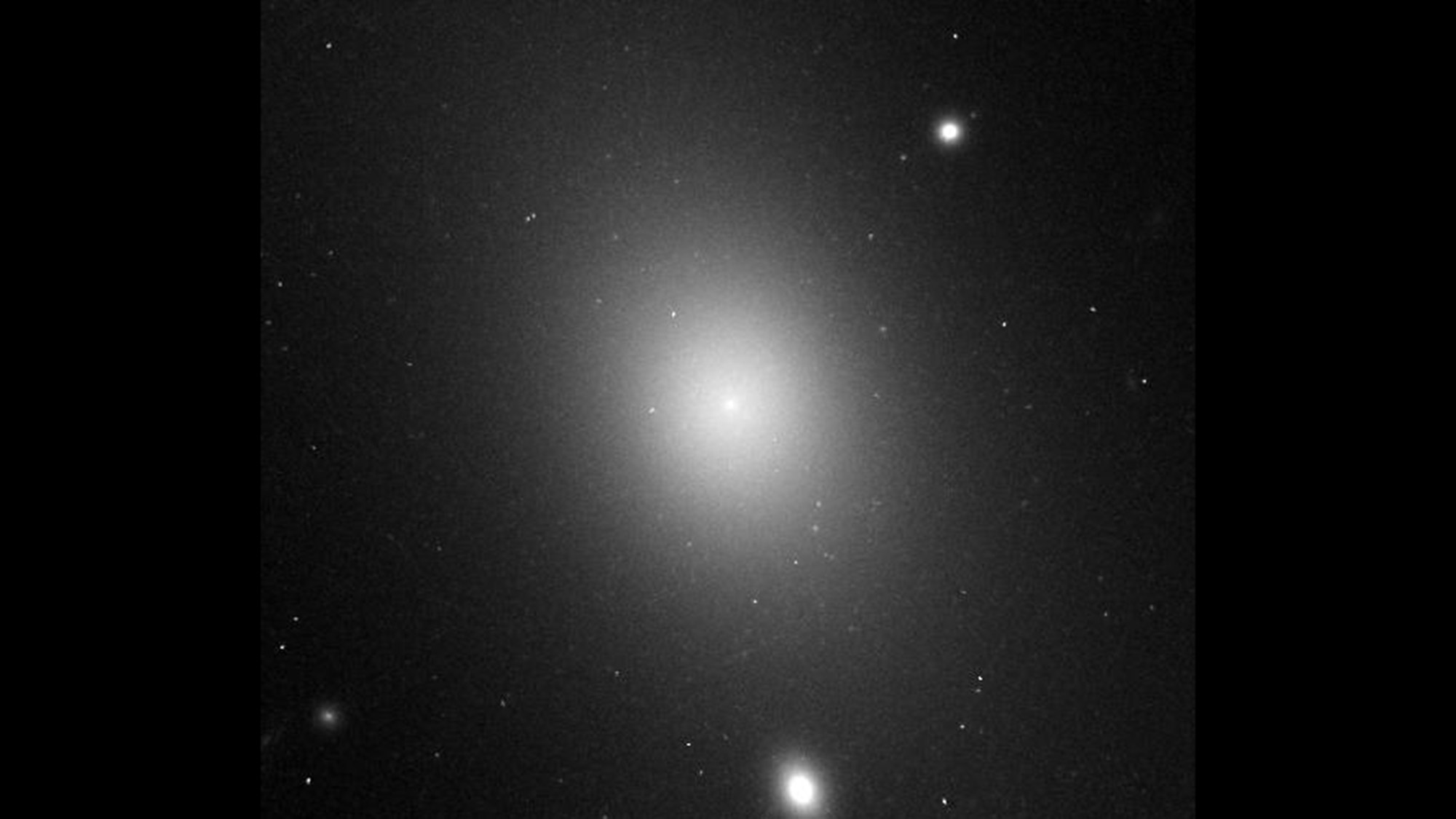
Our Milky Way galaxy is around 100,000 light-years across, but that's fairly average for a spiral galaxy. In comparison, the largest known galaxy, called IC 1101, is 50 times larger and about 2,000 times more massive than our galactic home. Stretching for an impressive 5.5 million light-years, IC 1101 is so big that, if placed where the Milky Way is now, its edge would reach past our nearest galactic neighbor, Andromeda.
Largest black hole: TON 618
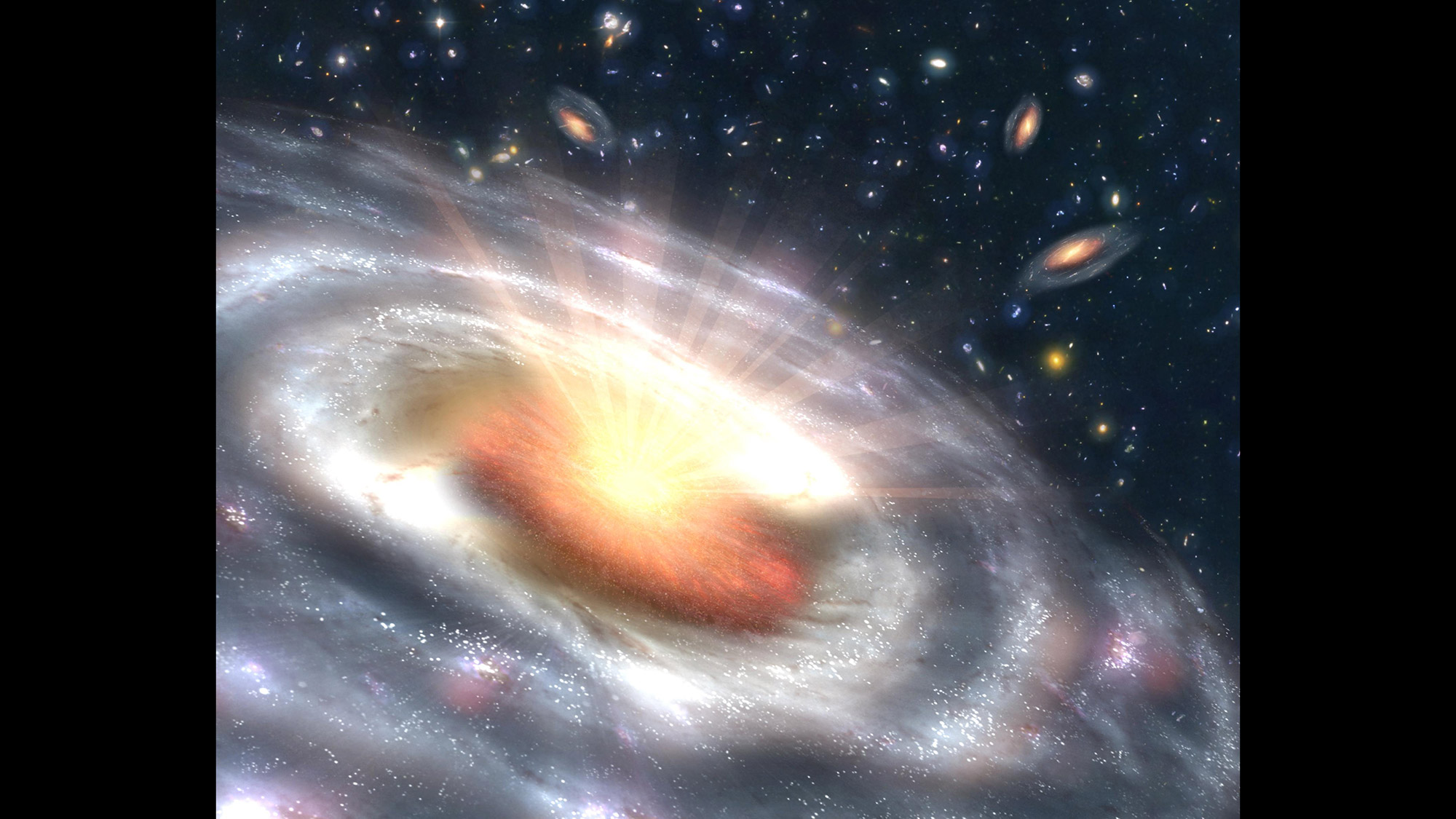
Supermassive black holes are thought to lurk in the center of every galaxy and can clock in at many millions of times the mass of the sun. But the biggest known black hole can be found powering a distant quasar — gigantic objects in the early universe spewing out insane amounts of radiation. This one, known as TON 618, has an estimated mass of 66 billion suns, according to a statement.
Get the Space.com Newsletter
Breaking space news, the latest updates on rocket launches, skywatching events and more!
Largest galactic farts: Fermi Bubbles
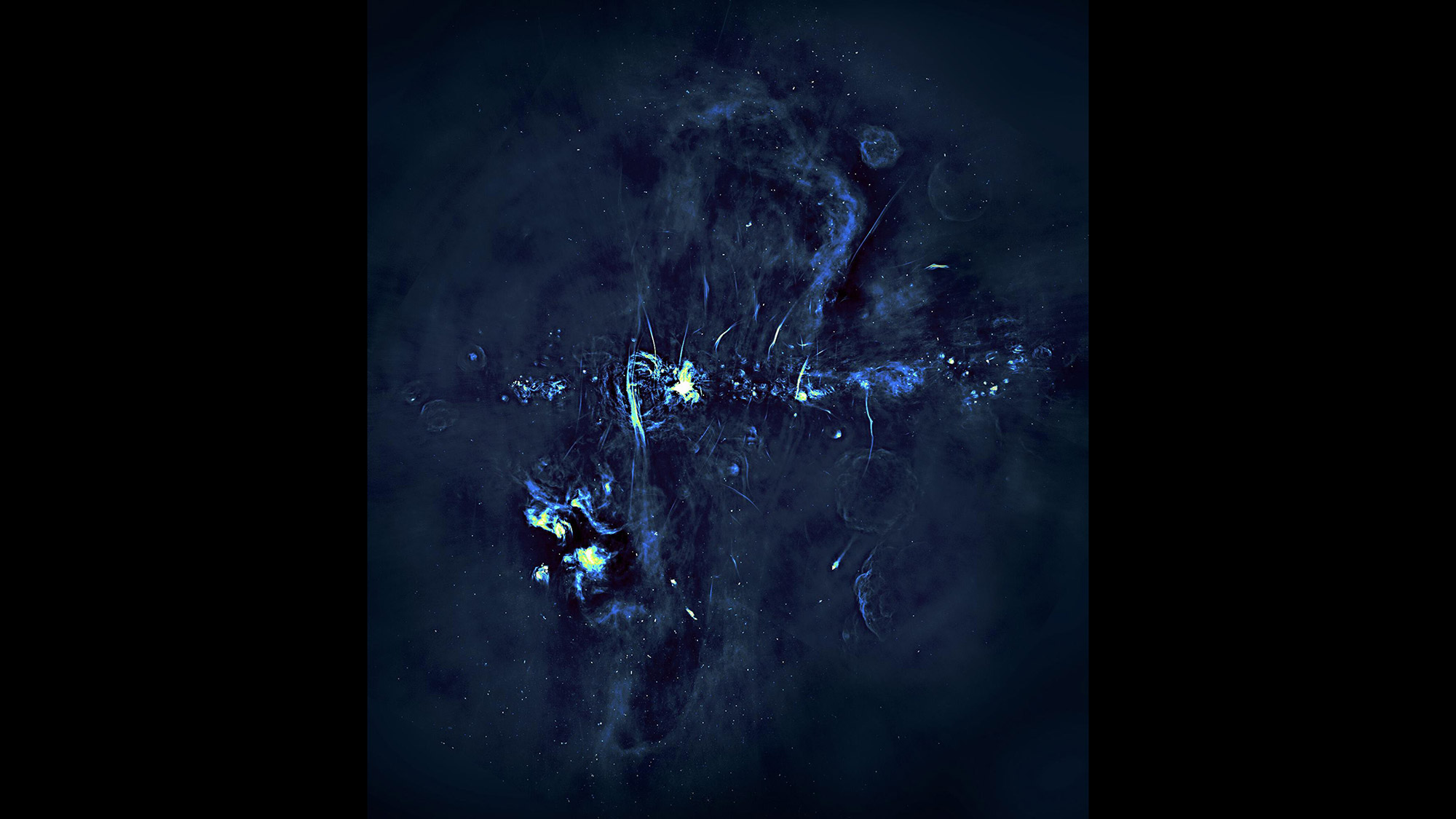
In 2010, astronomers using the Fermi space telescope discovered colossal structures emerging from the Milky Way. These massive blobs, which can only be seen in certain wavelengths of light, are a towering 25,000 light-years tall (a quarter of the Milky Way's width). Researchers believe the bubbles are the result of an ancient feeding frenzy that our galaxy's central black hole experienced, resulting in enormous belches of energy.
Largest single object: Protocluster SPT2349-56
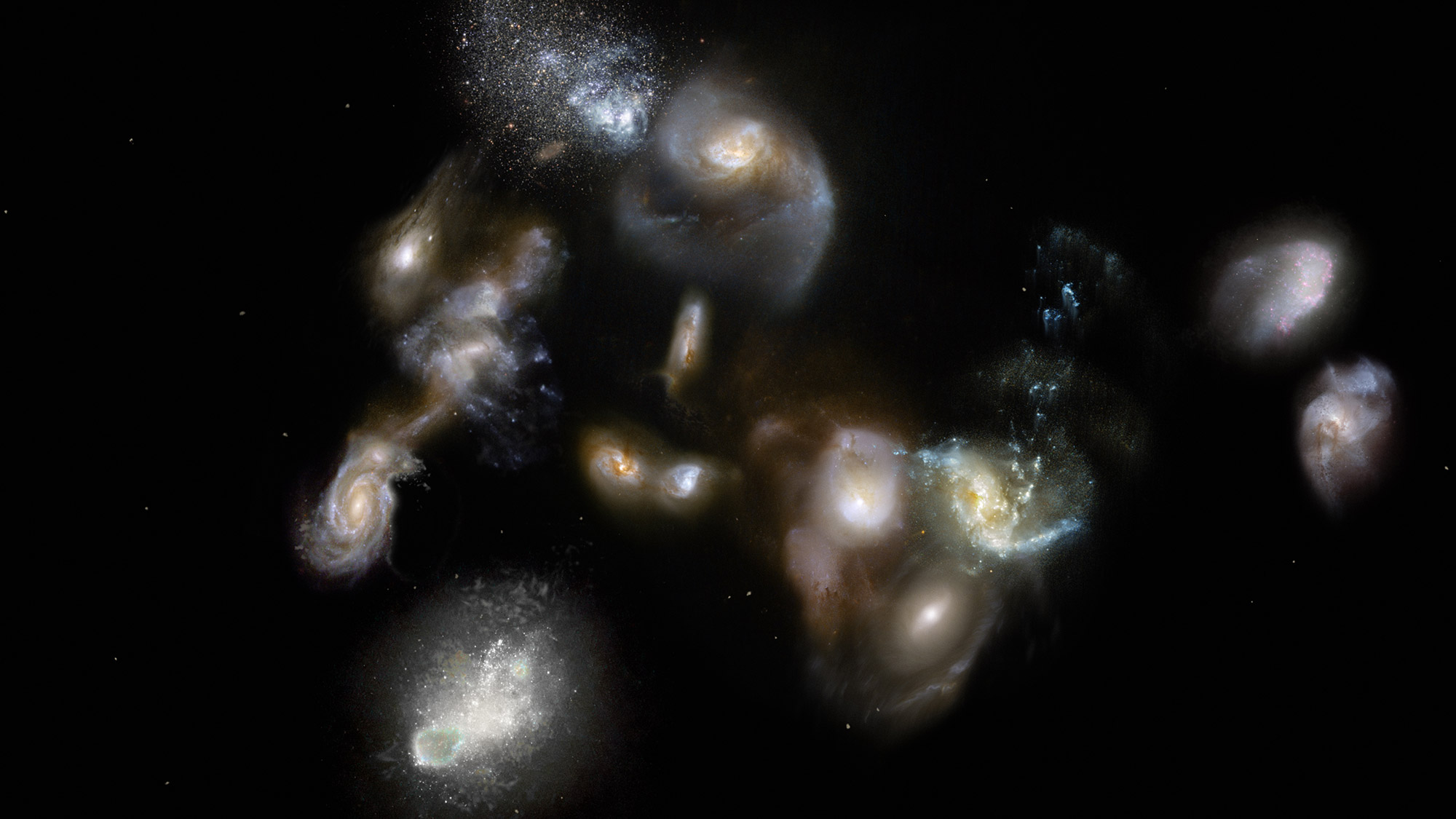
Back when the universe was only a tenth of its current age, 14 galaxies began crashing together and forming the most massive known gravitationally bound cosmic object, protocluster SPT2349-56. Squeezed together in a space that's only about three times as big as our Milky Way galaxy, this megamerger will eventually combine into a single galaxy weighing 10 trillion times the mass of the sun. Additional observations have revealed that around 50 additional galaxies surround the structure, which will settle into a gigantic object known as a galactic cluster, in which many galaxies orbit one another.
Largest galactic collection: Shapley Supercluster
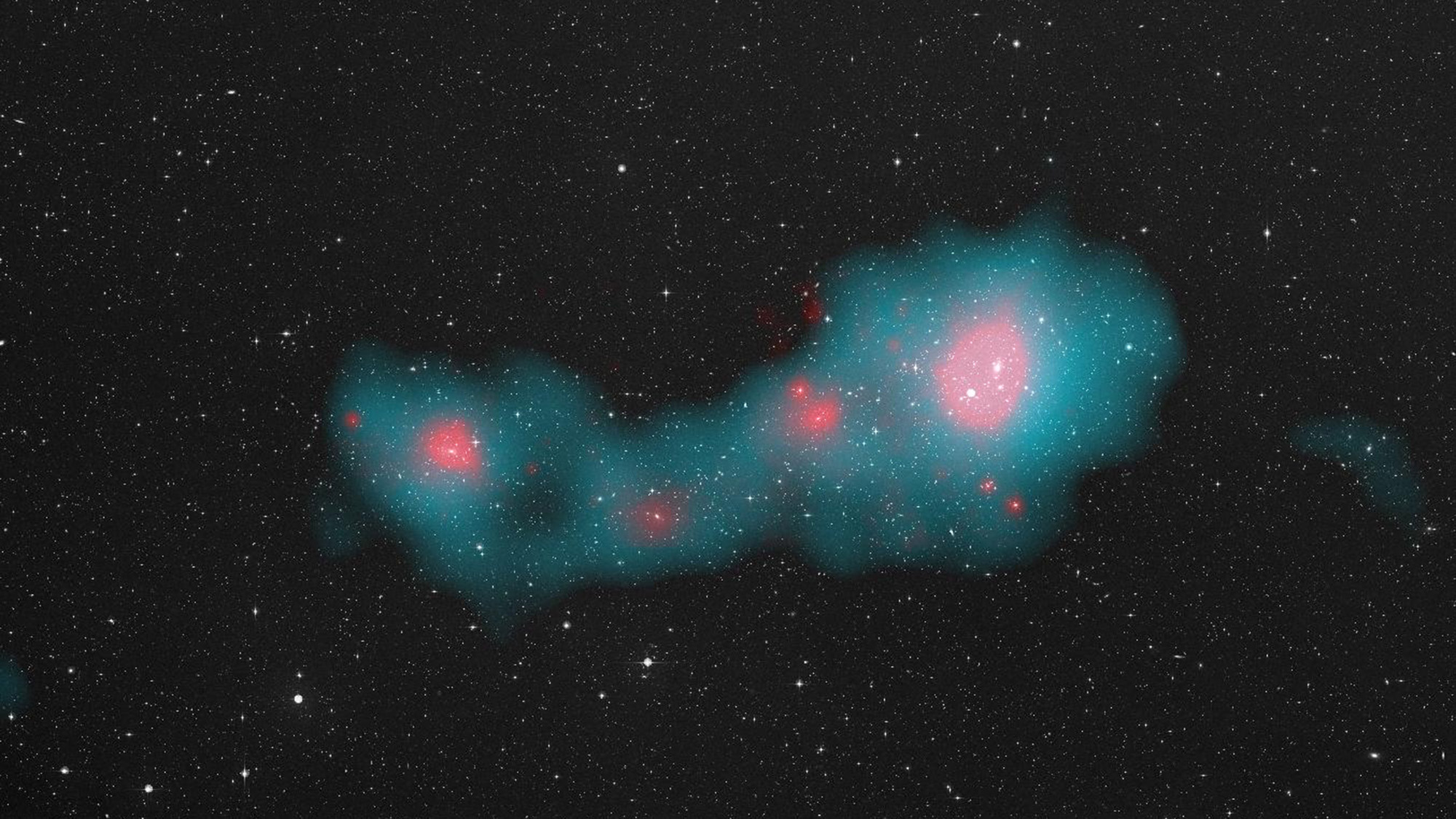
Astronomer Harlow Shapley discovered a colossal collection of galaxies in the 1930s that now bears his name. Containing more than 8,000 galaxies and with a mass of more than 10 million billion times that of the sun, the Shapley Supercluster is the largest structure in the local universe, according to the European Space Agency.
Largest supercluster: Laniakea Supercluster
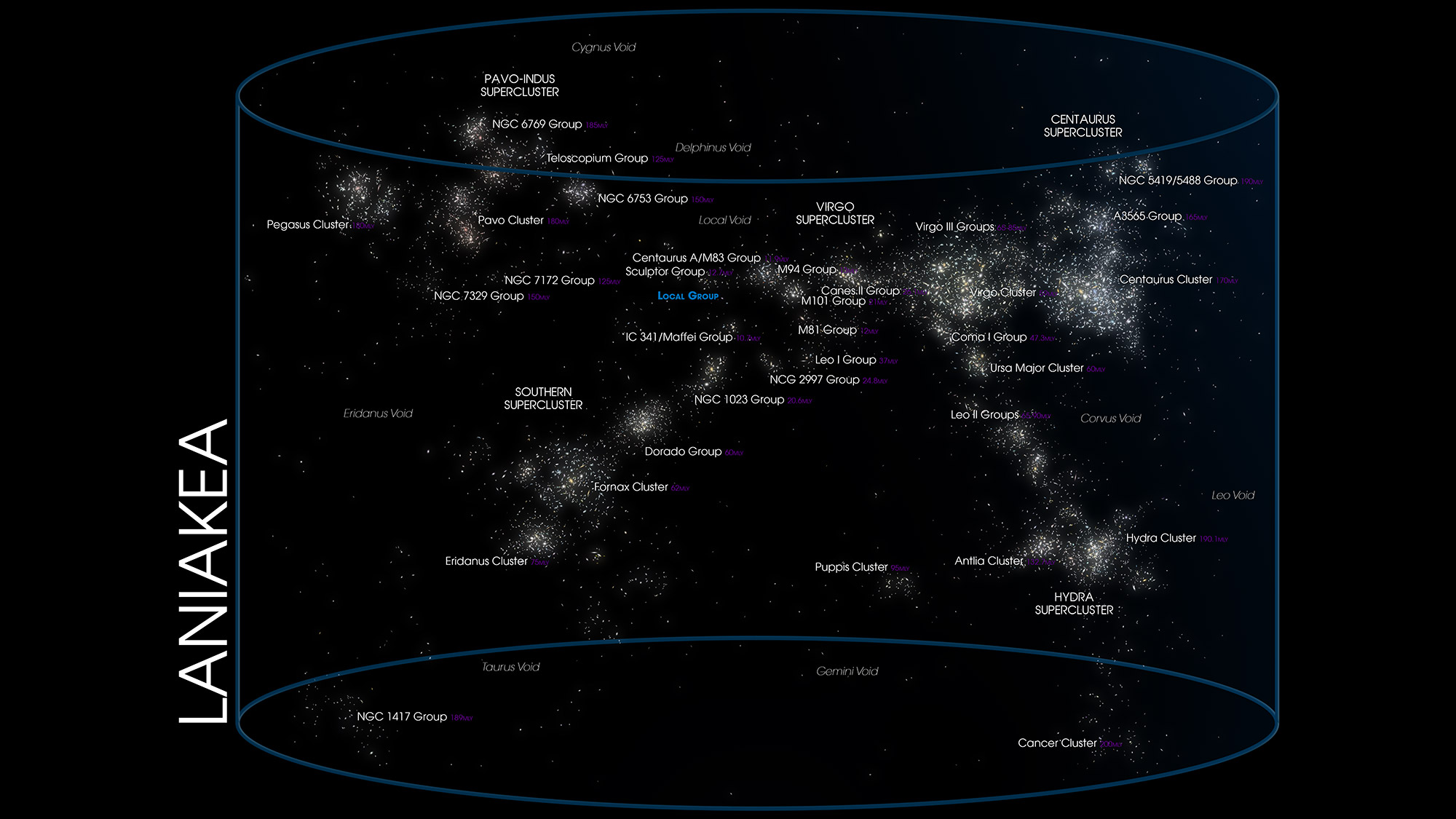
Our Milky Way is just a tiny member of a gargantuan collection of collections of galaxies known as the Laniakea Supercluster. Though it has no formal boundaries, astronomers estimate that it contains around 100,000 galaxies with a total mass about 100 million billion times that of the sun, and stretches for more than 520 million light-years across.
Largest quasar collection: Huge-LQG
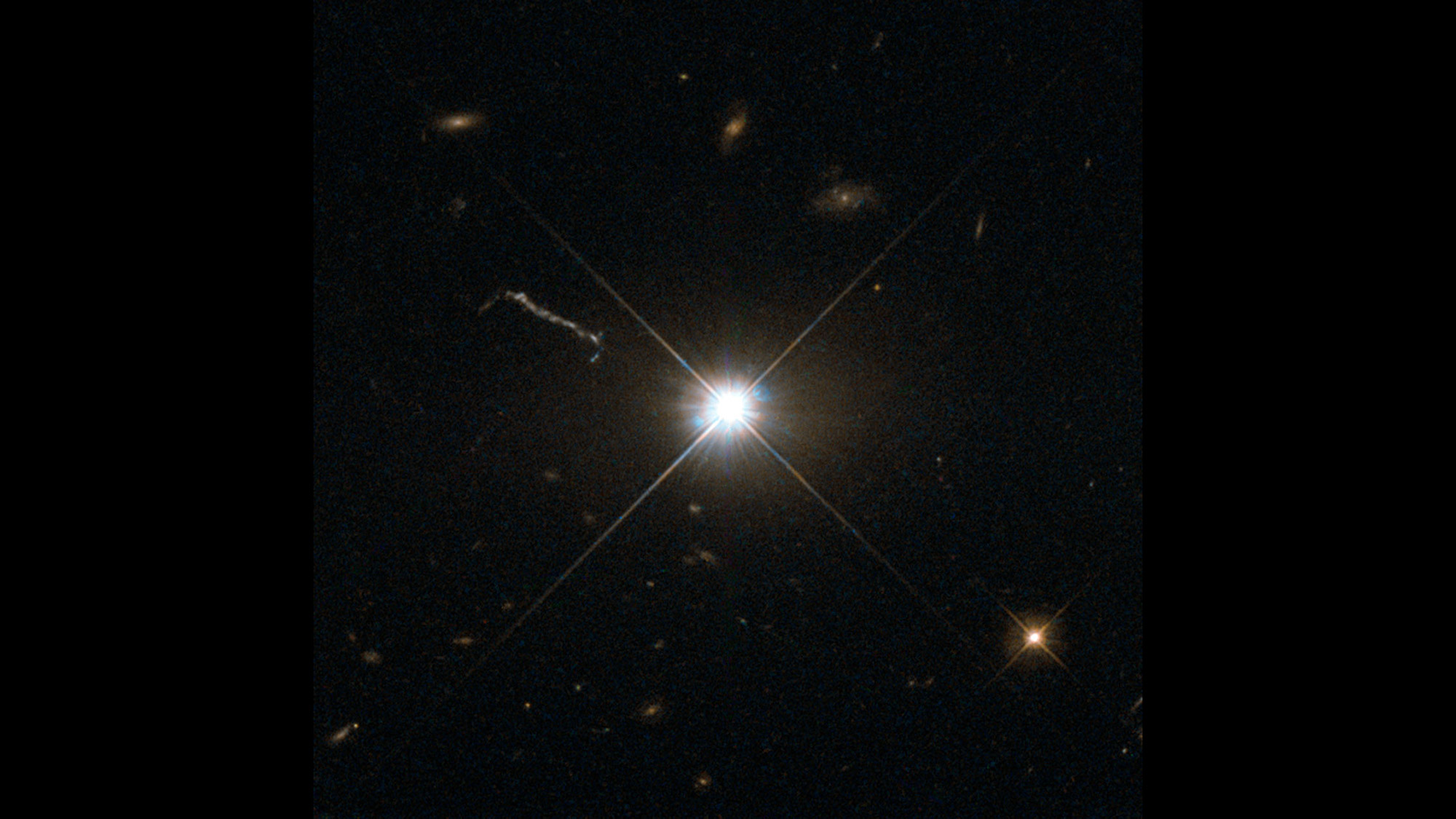
The distant black-hole-powered superbright objects known as quasars are already mighty large. But sometimes, quasars can come together into clusters, with the largest one imaginatively named the Huge-LQG (for Huge Large Quasar Group). Containing 73 quasars and an estimated mass of 6.1 quintillion (that's a 1 followed by 18 zeros) suns, the colossal cosmic collection is thought to be 4 billion light-years across at its biggest span, according to The Atlantic.
Largest thing in the universe: Hercules-Corona Borealis Great Wall
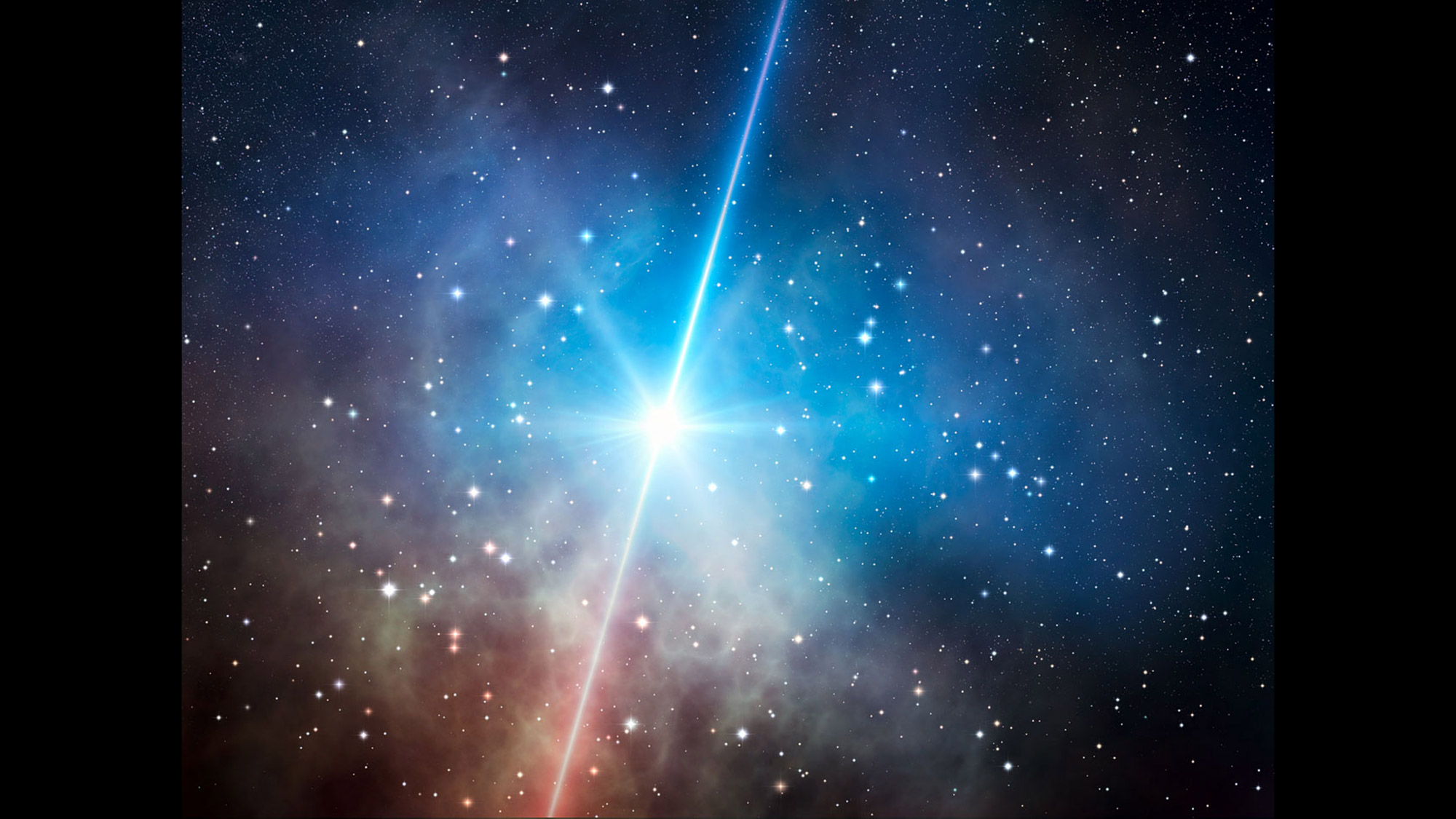
By mapping the locations of gamma-ray bursts — fleeting but powerful explosions that occur when a massive star dies — astronomers uncovered what is often considered to be the largest known entity in the cosmos: the Hercules-Corona Borealis Great Wall. The object is 10 billion light-years across and could contain billions of galaxies. The Great Wall was first discovered in 2013 when surveys showed gamma-rays particularly concentrated about 10 billion light-years away in the direction of the Hercules and Corona Borealis constellations.
Originally published on Live Science.

Join our Space Forums to keep talking space on the latest missions, night sky and more! And if you have a news tip, correction or comment, let us know at: community@space.com.

Adam Mann is a journalist specializing in astronomy and physics stories. His work has appeared in the New York Times, New Yorker, Wall Street Journal, Wired, Nature, Science, and many other places. He lives in Oakland, California, where he enjoys riding his bike. Follow him on Twitter @adamspacemann or visit his website at https://www.adamspacemann.com/.

